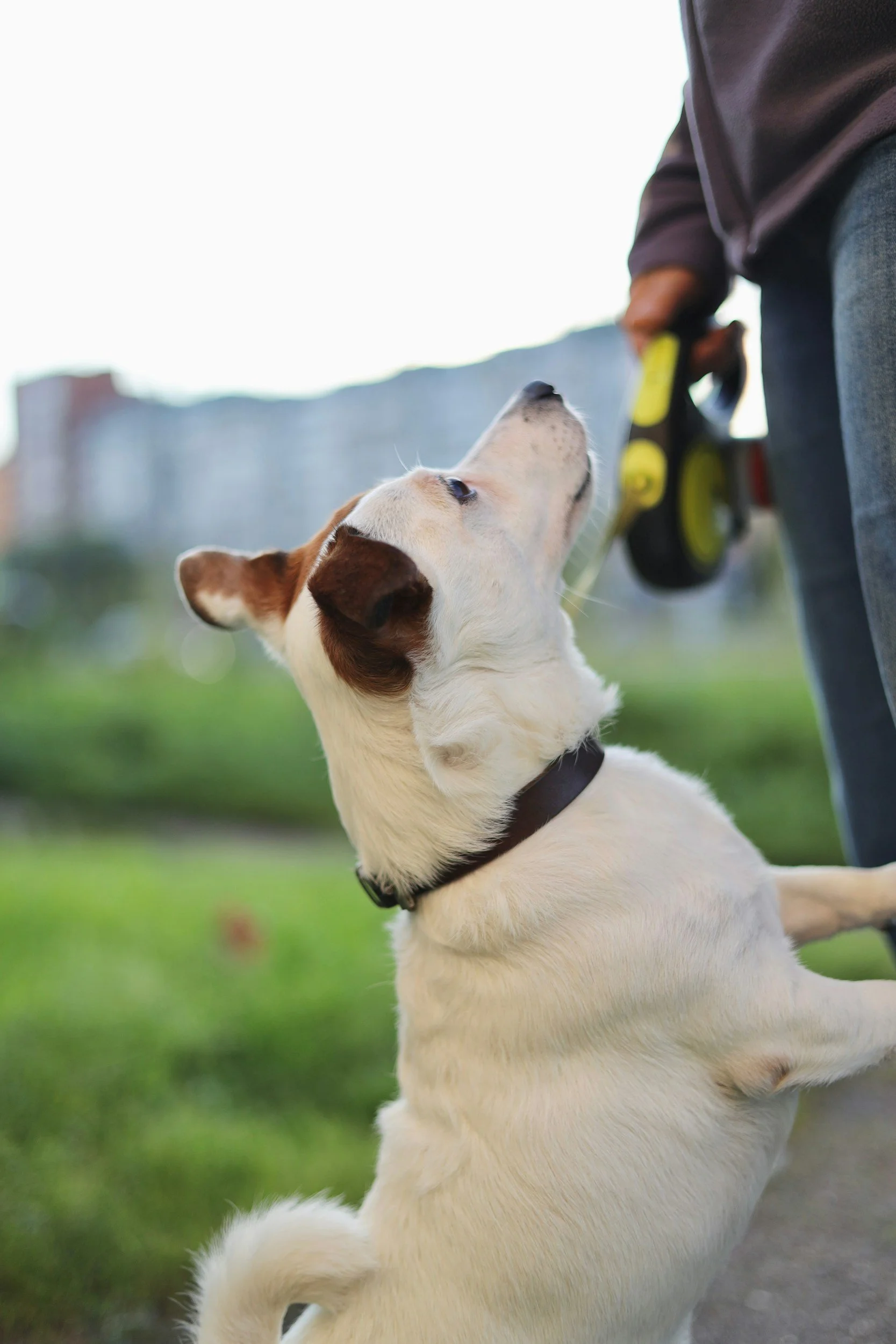What should I do when my dog jumps on me?
Jumping is a really common dog behavior problem.
When the dog is little, it’s not so much of a headache, but the bigger the dog, the more uncomfortable, embarrassing and dangerous the jumping becomes.
As a professional dog trainer, I don’t primarily fix jumping by teaching owners what to do when their dog jumps on them.
The solution to jumping doesn’t lie in the perfect response, but in proactive prevention.
Even if jumping is already a habit for the dog, I still start with non-training solutions that make jumping almost impossible.
Why is Prevention the priority?
Jumping is ‘self-reinforcing’ for a lot of dogs so they don’t need treats or praise to keep doing it.
If we want the jumping to stop, the rewards for jumping have to stop.
Prevention is the first step to stopping dog jumping because, in a lot of cases, once the dog’s paws land on the person, the jumping has been rewarded.
Since a lot of dogs find jumping rewarding without extra rewards (like treats, petting, praise or attention), the only way to completely stop the rewards is to completely stop the jumping.
Prevention makes it easier for the dog to get it right, and provides a more consistent message. It’s also the fastest way to get relief from a problem behavior!
How do I proactively prevent jumping?
Throw food. A lot.
Seriously, strategically putting food on the ground can solve a lot of problems, and jumping is one of them.
It’s how I minimize jumping just about every time I meet a dog.
Tossing food onto the ground detours the dog’s approach, and gets their nose down: dogs can’t jump at your face and have their nose on the ground at the same time.
Baby gates can also be helpful for preventing jumping while the dog is learning that four-on-the-floor is fun and does pay. These are especially helpful just inside entry points so you and your guests can get inside the house without worry about the dog jumping or escaping.
Can’t we correct the jumping? Won’t that remove the reward?
Not necessarily. Some dogs are willing to put up with some unpleasantness in exchange for the reward.
If you are trying corrections, and find yourself having to correct your dog over and over again, that tells me the jumping isn’t actually getting any better.
Corrections risk increasing your dog’s confusion and stress (which could cause him to jump more), and teaching him it’s scary when people walk into the house (which could cause aggressive or fearful behaviors).
The Oopsie Moments
I prioritize Prevention (big time) but even with the best Prevention, the dog’s paws still land on me sometimes.
What do I do when the dog jumps on me?
It depends.
If I’m talking to a client and their dog jumps on me, I usually go right on talking as if nothing happened. If it continues to be an issue, we talk about using a “pacifier” (like food stuffed toys, or long-lasting chews) to keep the dog occupied next time I come to the house. I might use a baby gate or pen to physically separate myself from the dog if that’s an option.
If I’m casually sharing space with a dog and he jumps as I’m moving around, I might:
freeze
turn away very slightly
lightly raise my leg or arm to block
simply keep walking
If often depends on my history with the dog, and how painful the jumping is. The more painful or habitual the jumping, the more serious I get about Prevention. I don’t enjoy being scratched, and the jumping won’t get any better if I continue letting the dog indulge in the habit.
If the DIY thing isn’t working for you, I’d be happy to help! Check out my in-home dog training programs for getting relief from your dog’s jumping.

